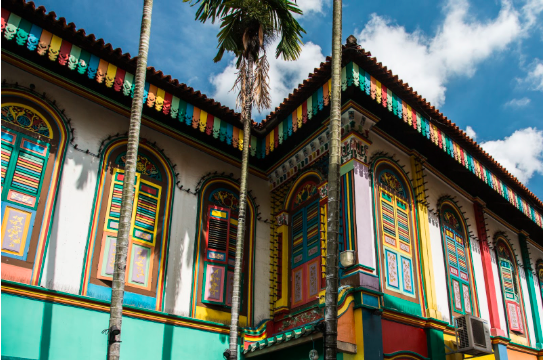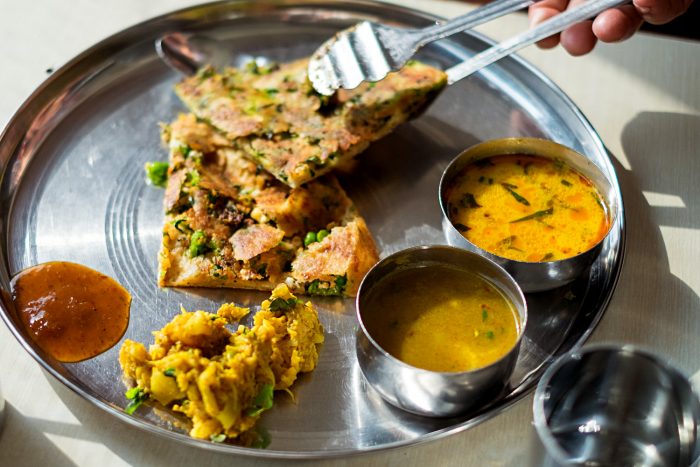There’s this amazing energy in Little India that you just won’t find anywhere else in Singapore. Honestly, the moment you step out of the MRT, it’s like you’ve been instantly transported. The air hits you with this incredible, thick smell, a beautiful mix of spices, fresh flowers, and incense. Every shopfront is painted in a blindingly bright colour, music is spilling out into the street, and it’s just constantly buzzing with people. It’s wonderfully messy, totally vibrant, and absolutely alive, the kind of place where you feel like a discovery is waiting around every single corner. Shopping here isn’t just a transaction; it’s about soaking up the rhythm of the community and happily getting a little lost in its charm.
The Best Way to Explore? Just Walk.
Forget the map. The absolute best way to explore Little India is on your own two feet, with zero plan. Serangoon Road is the perfect starting point, lined with every kind of shop you can imagine—from those old-school, sparkling goldsmiths to the stalls piled high with colourful textiles. The buildings themselves are gorgeous, many of them decades old, whispering stories of the past. You’ll find shops run by families who have been here for generations, still selling silk, spices, and incense the same way they always have.
If you pause and actually chat with the shopkeepers, you’ll find they are incredibly warm and genuine. They might tell you where a piece of jewellery came from or share a story about their family’s history in the neighbourhood. These little conversations are what make shopping in Singapore’s Little India feel so personal. You’re not just another customer; you’re an invited part of the experience.
Where Shimmering Silk Meets 24-Hour Chaos
The fabric scene here is one of the biggest draws. Walk into a textile shop and prepare to be overwhelmed—in the best way possible. You’ll be surrounded by shimmering rolls of chiffon, cotton, and silk in every single hue. Some fabrics sparkle under the lights; others are soft and simple. Even if you don’t plan to buy a thing, just walking through these stores is a visual feast—the textures, the colours, the sheer volume of patterns is inspiring.
And then, of course, there’s the famous Mustafa Centre. It’s an icon, a place where time genuinely stops, because it’s open 24 hours. It’s packed with literally everything you could possibly think of: perfume, electronics, snacks, gold, and clothes. It’s chaotic, it’s crowded, but that’s a huge part of the fun. Seriously, everyone who knows Little India knows that no trip is complete without getting a little gloriously lost in Mustafa’s endless aisles.
Fueling Up: Food, Culture, and Everyday Life
Shopping here is about the whole experience, not just the stuff. Take a break between stores—you’ll stumble on restaurants serving up amazing biryani, fluffy prata, and satisfying thosai. That smell of curry leaves and roasted spices is impossible to resist. Grab a seat at a little eatery and make sure you order a cup of masala tea—it’s strong, sweet, and full of warmth. Sitting there for a few minutes, just watching the neighbourhood move, gives you a real feel for what life is actually like here.
If you happen to come during Deepavali, you’ll see Little India at its most dazzling. The streets glow with festive lights, pop-up stalls sell all the traditional sweets and clothes, and music is everywhere. But even on a random Tuesday, the whole place has this incredible pulse that never really fades.
The Old and the New, Happily Coexisting
Little India is known for its heritage, but trust me, it’s not stuck in the past. Right in between those traditional spice shops, you’ll spot quirky cafés, modern art galleries, and trendy boutiques. A lot of younger entrepreneurs are here, creatively reimagining traditional Indian crafts—selling contemporary jewellery, handmade candles, and eco-friendly décor that’s inspired by their own culture.
This blend of old and new is what gives the area such a unique balance. You might walk into a building that looks decades old on the outside, only to find it’s selling sleek, modern items inside. That, to me, is the real beauty of Little India—it’s always evolving while staying totally true to its beautiful roots.
A Few Friendly Tips
If you can manage it, try to go during the day, preferably in the morning; the streets are quieter, and the weather is much more forgiving. Dress in something comfortable, keep some cash on you for the smaller stalls, and don’t be afraid to try bargaining politely—it’s actually expected at some places! If you get totally turned around or can’t figure out what to do next, just ask a local nearby. People here are generally super happy to share their recommendations or point you toward their favourite spots.
Conclusion
Honestly, shopping in Singapore’s Little India is an experience that stays with you long after you leave. It’s not just about the items you buy; it’s about the colours you soak up, the people you meet, and the little stories you stumble upon along the way. The neighbourhood has this distinct, lively, and welcoming heartbeat all its own. Whether it’s your first time or your tenth, it somehow manages to feel a little different every single time.
If you love uncovering these different sides of Singapore, visit Taste of SG for more stories, travel tips, and island ideas!



